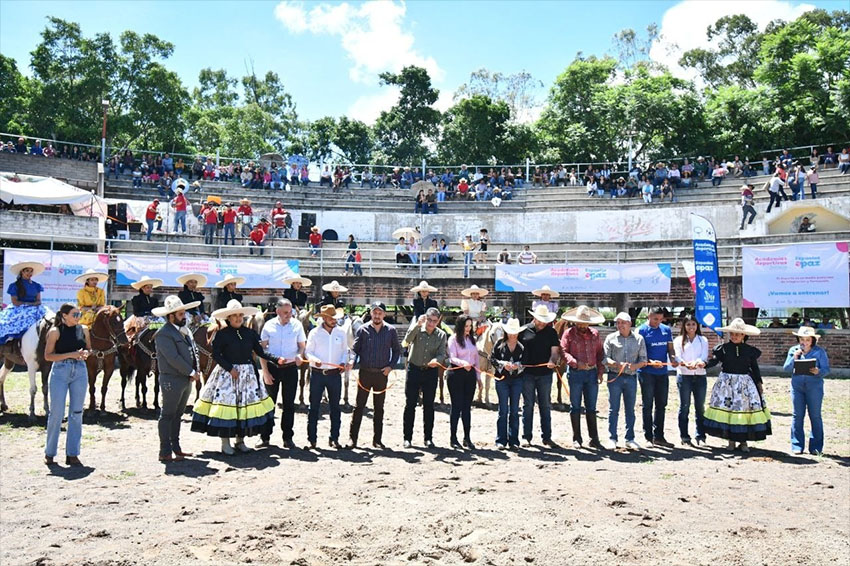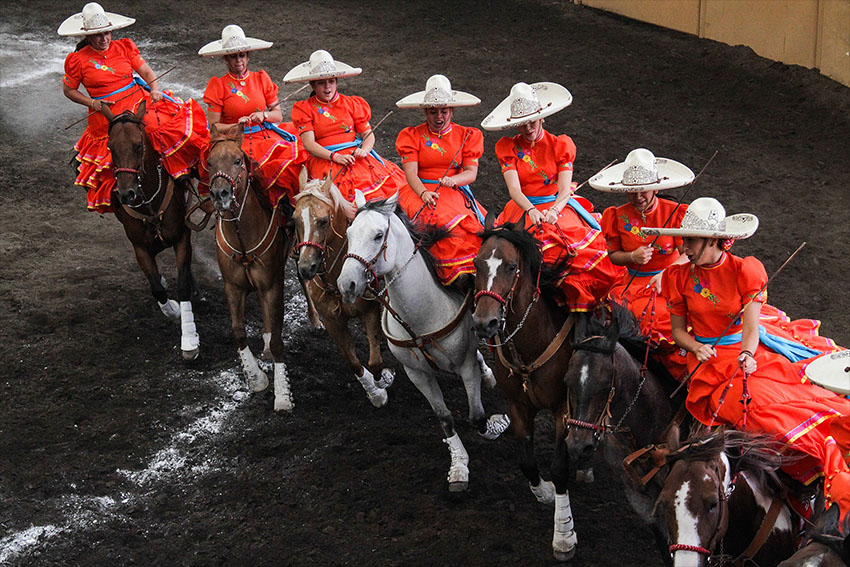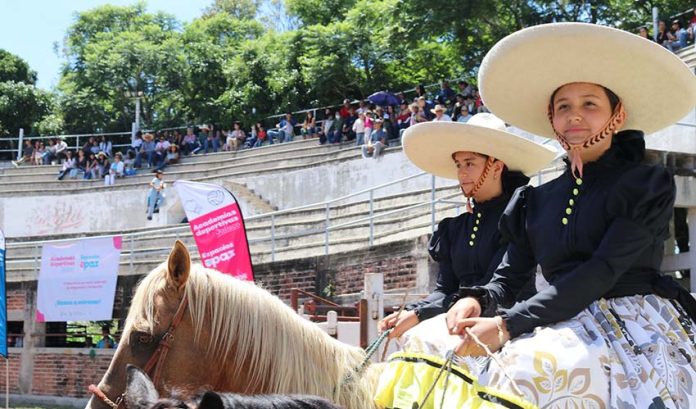Charrería, a popular rodeo-like pastime in Mexico that evolved from competitions between ranch hands, is generally dominated by men, but women and girls have a place in the sport — and now they have their own school.
In late August, the Escaramuzas Sports Academy was inaugurated in San Martín de Hidalgo, a small town in Jalisco that has perhaps the strongest charrería tradition in the country. The first classes began earlier this month, a couple of weeks before National Charro Day on September 14.
“It fills me with pride to share that … we [have] inaugurated the first sports academy in the state of Jalisco dedicated to the preparation of escaramuzas,” San Martín de Hidalgo Mayor Moisés Rodríguez Camacho wrote on Facebook. “Participants will be able to acquire tools that will help them in their holistic development.”
Escaramuza (which translates literally as “skirmish”) is a branch of charrería (the term for the sport in general) practiced only by women. An escaramuza is the term given to a team of six, eight or 12 women who ride together in formation. An individual woman in the sport is called a charra, while a man is a charro).

A escaramuza does 12 exercises, some of which include difficult turns or closely crossing in front of one another at high speeds. Riding sidesaddle, the daring women also perform difficult, artistic tricks with their horses.
Women’s role in the sport is said to have originated in the 1950s in the Jaliscan Highlands, specifically Tepatitlán de Morelos, which is about 150 kilometers from the new school. The beautiful clothing that they wear is an Adelita-styled china poblana outfit that originated from the state of Puebla, where the sport is also practiced.
Because of the skills mentioned above, training for an escaramuza is intense, as the women must be able to control their horses with great dexterity and ride in sync with their teammates. That’s where the new school, which is based at the Lienzo Charro Municipal in San Martín de Hidalgo, comes in. Initial training for the girls and teens will consist of lessons that occur two or three times per week.
The first session reportedly had eight students, but the early goals are to have at least a dozen girls between the ages of 10 and 15 participating every week. And it sounds like the training won’t be easy.

“The more dangerous an exercise is, the greater the concentration must be to avoid a fall or a collision between the animals,” said Stefany Celina López, an escaramuza athlete and the mother of one of the girls in the program (the sport is often a tradition among multiple generations in a family). “Coordination is the most important thing to be able to control the horses.”
At the inauguration ceremony, Ana Lucía Camacho Sevilla highlighted the value of charrería in the preservation of Mexican culture and the people’s love for Mexico and horses.
“The fact that we work to train our children and young people in these sports spaces helps us a lot to build community and rebuild the social fabric,” added Camacho, the secretary of agriculture and rural development in Jalisco.
The ceremony featured a cavalcade, the presentation of escaramuzas, an exhibition of rope tricks performed by children and a show of dancing horses.
Charrería’s origins date back to the beginning of the 20th century, when it was practiced in the haciendas and ranches of Jalisco as an entertainment activity between the farmers and their workers. Featuring lavish costumes, mariachi music, lots of flair and more demonstrations of skill (leaping from one horse to another, for example) than competition-heavy U.S.-style rodeos or professional bull-riding events, it spread to other parts of the country and even to cities. UNESCO granted it Intangible Cultural Heritage status in 2018.
Sara Guerrero Zárate, 13, is one of the school’s most advanced students. She has been attending competitions since she was very young.
“It caught my attention more because of the horses than because of the sport,” she said. “But when you start practicing it, you develop a huge love for it [and you want to attend] every training session. Other sports are nice, but I like being with my horse better; plus you represent [the culture of] Mexico.”
Verónica Álvarez, also 13, said the escaramuza becomes a second family.
“Some exercises are scary, but it is part of it to feel the adrenaline…” she said. “I ride my horse and forget about everything.”
With reports from Diario de Mexico and La Crónica de Hoy Jalisco
